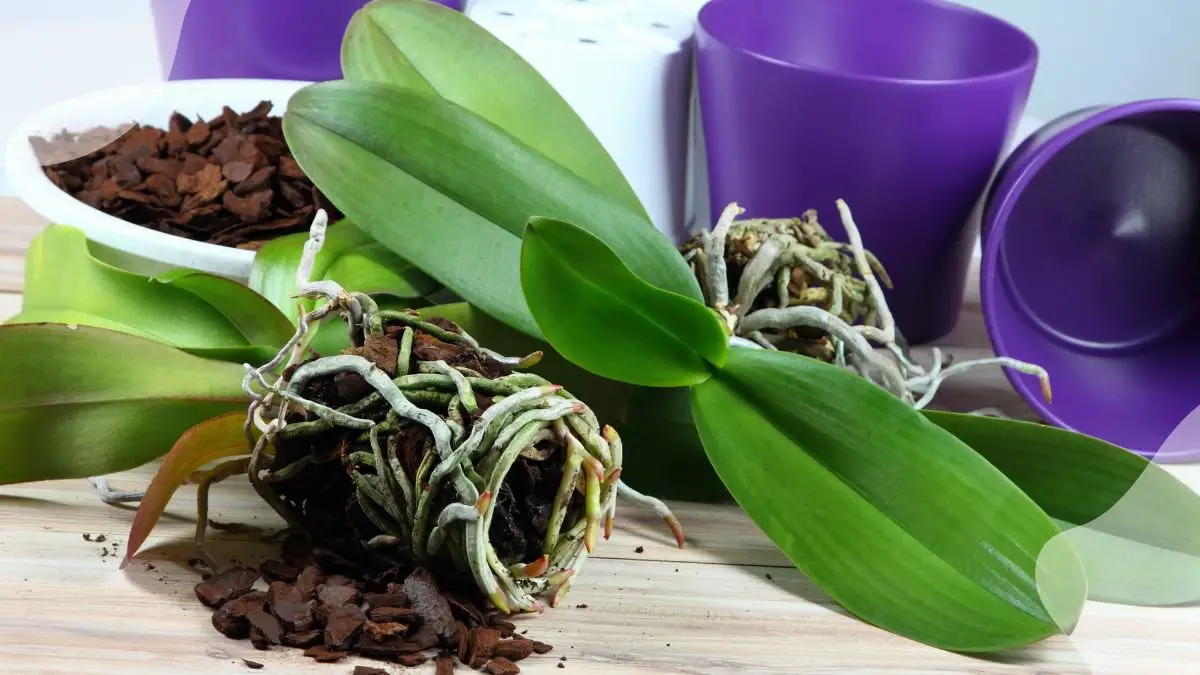Wondering when to replant your orchid for optimal growth and blooming? Knowing the right time is crucial for ensuring your orchid thrives. By understanding these indicators, you can provide the best care for your orchid, leading to vibrant flowers and robust growth. Stay tuned to discover the telltale signals that reveal when your orchid needs repotting for a new home.
Key Takeaways
- Regularly check your orchid's roots for overcrowding or decay as a sign that it needs repotting.
- Repotting orchids is crucial for their health and growth, providing them with fresh nutrients and space to thrive.
- The optimal timing for repotting orchids is when they are not in bloom and during their active growing season.
- Before repotting, gather all necessary materials like new pot, fresh potting mix, and tools for a smooth process.
- Follow a step-by-step guide for repotting your orchid to ensure minimal stress and successful transition.
- After repotting, provide proper aftercare by adjusting watering and light levels gradually to aid in recovery.
Recognizing the Need for Repotting
Overgrown Roots
Trim overgrown roots to maintain orchid health. Repot orchids with crowded roots pushing out of the pot. Look for roots reaching out into the air as a sign of overgrowth.
Bad Potting Media
Replace decomposed potting media to prevent root suffocation. Check for chunky and loose bark mix for healthy orchid roots. Use fresh bark mix to ensure proper aeration for the roots.
Tangled Roots Alert
Untangle roots gently to avoid damage during repotting. Trim damaged roots carefully to promote new growth. Remove old compost to prevent root rot in orchids.
Why Repotting is Crucial
Orchid Health
Orchid health is crucial for thriving plants. Monitor your orchid's health by checking the root color and growth. Ensure the roots are white and free from any discoloration, which indicates a healthy plant. Look for pale green tips on roots as a sign of new growth, showing that your orchid is flourishing.
Enhance Blooming
To enhance future blooms, it's essential to repot orchids after they have finished blooming. Providing a fresh bark mix creates optimal conditions for blooming. Choosing the right pot size is also crucial to support healthy blooming, allowing the roots to spread and thrive.
Prevent Diseases
Regularly repotting orchids helps prevent diseases and ensures the plant's longevity. Using gloves during repotting can protect your hands from potential infections that may be present in the soil or on the plant. When trimming roots and leaves, do so carefully to avoid spreading diseases between different parts of the plant.
Optimal Timing for Repotting
Best Seasons
Spring is the ideal time to assess orchid repotting needs as it promotes optimal growth. During this season, orchids signal new growth emergence after the dormant cycle, making it a perfect time to repot them. For best results, repot all new orchids post-blooming to ensure they thrive in their new environment.
Growth Phases
Understanding the different growth phases of orchids is crucial for timely repotting. Orchids should be repotted when they start running out of room in their pots, which can hinder their development. To determine the right time for repotting, check for signs of growth such as new shoots or roots peeking out.
- Orchids should be repotted when they outgrow their current pots.
- Regularly inspect the roots and potting medium for overcrowding indicators, especially when considering orchid repotting.
After Blooming
After your orchid finishes blooming, it is essential to repot it immediately to promote healthy growth. Using sphagnum moss can help prevent root rot, ensuring that your orchid remains healthy and vibrant post-blooming. It's crucial to assess the need for repotting based on signals from new growth, such as fresh leaves or roots emerging.
- Repotting after blooming helps rejuvenate the orchid's health.
- Sphagnum moss aids in maintaining optimal moisture levels for root health.
Preparing to Repot
Tools and Materials
Gather essential supplies for repotting, including fresh bark mix, a larger pot, and pruning tools. Use pruners and scissors to trim roots and leaves effectively, promoting healthy growth. Ensure gloves and a blunt knife are available for repotting an orchid safely.
Choosing the Right Pot
Select a pot one size larger than the original to provide ample space for root expansion. Consider the material of the pot; terracotta pots are excellent choices due to their breathability. Check for adequate drainage holes to prevent waterlogging, crucial for orchid health.
Selecting New Media
Opt for fresh bark mix as the new potting media, ensuring optimal aeration for the roots. Choose chunky and loose bark mix to promote air circulation around the roots, facilitating nutrient absorption. Avoid using decomposed media, as it can lead to root suffocation and hinder growth.
Step-by-Step Repotting Guide
Removing the Orchid
When repotting an orchid, gently remove it from the pot to prevent root damage that can harm the plant. Using a dull knife, loosen the rootball carefully to facilitate the repotting process. If the roots are stiff and dry, soak them to soften tissues for easier removal without causing harm.
Cleaning the Roots
To ensure the health of your orchid, trim away any damaged parts of the roots before repotting. It is crucial to remove old compost to prevent root rot, which can be detrimental to orchids. Carefully untangle the roots to prepare them for optimal growth in their new environment.
Potting the Orchid
When potting your orchid, settle it into the new pot filled with fresh bark mix to provide essential nutrients for growth. Work the bark mix between the roots to promote stability and proper anchoring within the pot. Confirm that the orchid is positioned securely in its new pot to encourage healthy development.
Aftercare for Repotted Orchids
Watering Needs
After repotting an orchid, adjust the watering frequency to accommodate its new environment. Water the orchid sparingly to prevent root rot as it adjusts to its new pot. Monitor the moisture levels in the new pot regularly to avoid overwatering.
Light and Temperature
Place the repotted orchids in an area with optimal light conditions. Ensure they receive enough light for healthy growth. Maintain consistent temperature levels to support the overall health of the orchids.
Fertilization Schedule
Adjust the fertilization schedule after repotting to provide adequate nutrients for growth. Use a balanced fertilizer to promote healthy development post-repotting. Feed the orchids according to their specific growth phase and nutritional needs.
Common Mistakes to Avoid
Overpotting
Avoid overpotting orchids as it can lead to root suffocation, hindering their growth. Opt for pots that offer sufficient space for the roots to expand and thrive. Only repot orchids when necessary to prevent overpotting issues.
Wrong Media
When repotting orchids, ensure you use a fresh bark mix instead of decomposed media. Look for chunky and loose bark mix to promote proper aeration within the pot. Using the wrong media can result in root problems, affecting the overall health of your orchids.
Neglecting Aftercare
After repotting your orchids, provide them with proper aftercare to support their recovery and growth. Keep a close eye on your orchids for any signs of stress or disease post-repotting. It's crucial to maintain regular care routines even after repotting to ensure the well-being of your orchids.
When to Seek Professional Help
Persistent Issues
Address persistent issues like root rot promptly. Seek professional advice if orchid problems persist post-repotting. Monitor orchid health closely to identify and resolve ongoing issues.
Disease Signs
Watch for signs of disease in orchids post-repotting. Look for discoloration or unusual growth patterns as disease indicators. Treat diseases promptly to prevent further spread in orchids.
Unusual Plant Behavior
Monitor orchids for any unusual behavior post-repotting. Address any changes in growth patterns or appearance promptly. Investigate and resolve any unusual plant behavior to maintain orchid health.
Closing Thoughts
You've learned the crucial reasons behind repotting orchids and the optimal timing to do so. By recognizing the signs, preparing properly, and following the step-by-step guide, you can ensure your orchids thrive in their new environment. Remember to avoid common mistakes and seek professional help when needed. Now, armed with this knowledge, you can confidently care for your orchids and enjoy their beauty for years to come.
Don't wait until it's too late; check your orchids today and give them the care they deserve. Your green thumb will only grow stronger as you master the art of repotting orchids. Keep nurturing your plants with love and attention, and watch them bloom like never before!
Frequently Asked Questions
When is the right time to recognize the need for repotting an orchid?
Recognize the need for repotting when the orchid outgrows its current pot, has roots growing over the edge, or shows signs of poor drainage like yellowing leaves.
How crucial is repotting for the health of an orchid?
Repotting is crucial as it refreshes the growing medium, prevents root rot, promotes better nutrient absorption, and encourages healthy growth and blooming.
What is the optimal timing for repotting an orchid?
The optimal time to repot an orchid is after it has finished flowering, typically every 1-2 years in spring or early summer when new growth begins.
How should one prepare to repot an orchid effectively?
Prepare by gathering clean pots, fresh potting mix suitable for orchids, sterilized tools, and ensuring a well-lit, clean workspace to minimize stress on the plant.
What are some common mistakes to avoid when repotting an orchid?
Avoid overpotting (using a pot too large), damaging healthy roots, burying the orchid too deep in the new medium, and using incorrect potting mix that retains too much moisture.
Image Source: Paid image from CANVA





